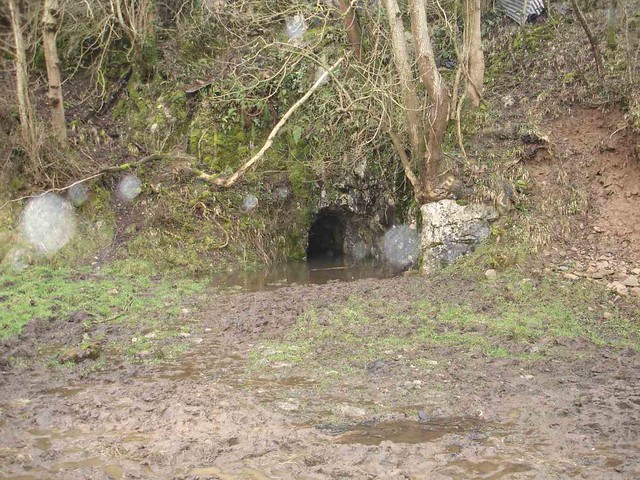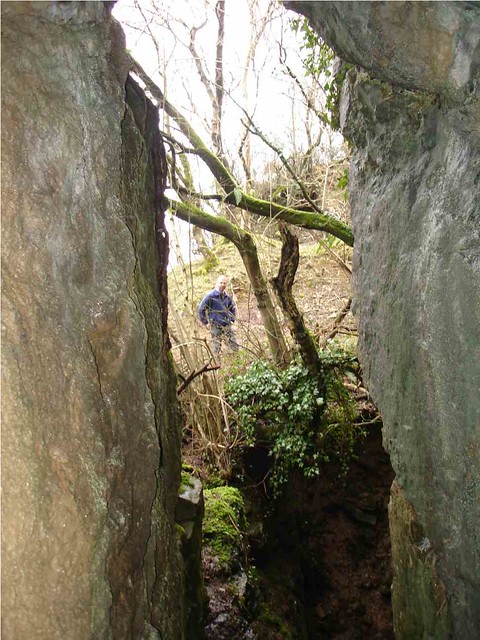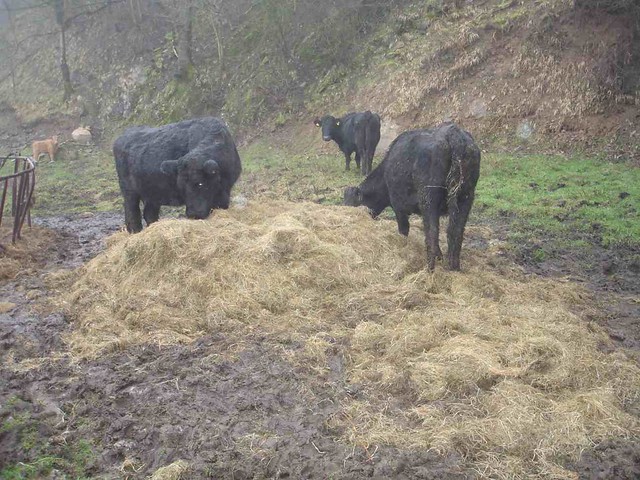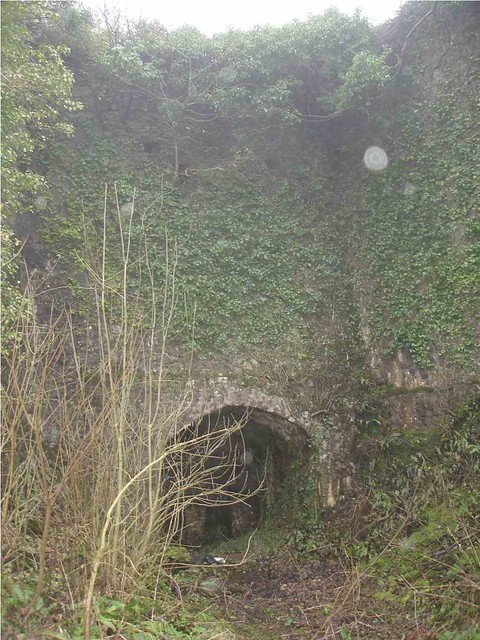Graigwen
Active member
robjones and myself pottered around this obscure little mine on the 25th February. It was very wet, and clothing and kit all smelled strongly of cow sh*t after.
The lower level is run in a short distance from the portal and access is through a considerable depth of cow sh*t (we did not bother).

There is a large open stope which was flooded to the level of the lower adit. Discussion with the farmer established that previous visits which have found the stope dry (or at least with a significantly lower water level) followed dry periods when the farmer had pumped water from the stope as a supply for his cattle. To the right of the stope is an upper level which gives access to a shaft which enters the stope.

The shaft was sunk from the floor of a limestone quarry above the mine. In the upper level small calcite veins were seen, with traces of malachite and evidence of previous sampling.

It had been intended to dig some pits to investigate what the tip outside the lower level was comprised of, but as this is now used as a winter base for the cattle these plans were abandoned.

While the stope is large, it is suspected that only part of the material extracted was copper ore, the limestone being used to feed limekilns on the farm. Later limekilns stand by the road a few yards to the north.

The mine offers little sporting activity but is interesting geologically.
(Access only with the permission of the farmer, Mr Evans, Graig Farm.)
The lower level is run in a short distance from the portal and access is through a considerable depth of cow sh*t (we did not bother).

There is a large open stope which was flooded to the level of the lower adit. Discussion with the farmer established that previous visits which have found the stope dry (or at least with a significantly lower water level) followed dry periods when the farmer had pumped water from the stope as a supply for his cattle. To the right of the stope is an upper level which gives access to a shaft which enters the stope.

The shaft was sunk from the floor of a limestone quarry above the mine. In the upper level small calcite veins were seen, with traces of malachite and evidence of previous sampling.

It had been intended to dig some pits to investigate what the tip outside the lower level was comprised of, but as this is now used as a winter base for the cattle these plans were abandoned.

While the stope is large, it is suspected that only part of the material extracted was copper ore, the limestone being used to feed limekilns on the farm. Later limekilns stand by the road a few yards to the north.

The mine offers little sporting activity but is interesting geologically.
(Access only with the permission of the farmer, Mr Evans, Graig Farm.)



